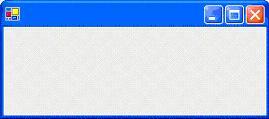 | |||
|
C# (C-Sharp) Tutorial The European Computer Manufacturers Association (ECMA) for standardization approved the specifications for the C# language specification and the Common Language Infrastructure (CLI) in December 2001, submitted by Microsoft, Hewlett-Packard and Intel. The Ecma Standard specifies:
You can download the standard from ECMA at http://www.ecma-international.org/publications/files/ecma-st/ECMA-334.pdf.
Express EditionsIn order to write applications using version 2.0 of the .NET Framework, Microsoft has released versions of Visual Studio known as Express editions. These exist in order to allow hobbyists and students alike to learn to program. These editions are free to download. There are six flavours of the Express editions available for download. Each of the quotes below is taken from Microsoft’s own web site. C# Express - http://msdn.microsoft.com/vstudio/express/visualcsharp/download/default.aspx "Visual C# 2005 Express Edition is a simple, lightweight, integrated development environment designed for beginning developers and non-professional developers interested in building Windows Forms, class libraries, and console-based applications."
The Chief Language Architect behind C# is Anders Hejlsberg. He is also known for having designed Turbo Pascal, one of the first languages available for PCs. C# has its roots based in C and C++. The syntax is very similar to Java, to the point of simple classes will port by changing a few lines. C# is a simple, type-safe, event-driven, component-oriented, and object-oriented programming language with inherent support for encapsulation, inheritance and polymorphism. With this in mind C# supports features that C++ and Java developers are used to:
C# has some features that appear in neither of the two languages prior to .NET, such as Delegates and XML comment tags, whilst other features are not supported such as pre-processor directives and multiple inheritance. C# Console Applicationclass HelloWorld
{
The above code gives the following output.
 Figure 1-12: A C# Console Application C# Windows Application// Namespace Declaration using System; The above code gives the following output.
 Figure 1-13: A C# Windows Application
|
|||